Ask a question, get an answer ASAP!
GET A QUOTE
Tire Rotation Cost
Service Location
Upfront, Transparent Price
(1,055)You know that tires are an important part of your vehicle and you can’t get anywhere without them. However, there is a lot more to this component on your vehicle than you may realize.
When you go to purchase a new tire, you must provide a set of numbers and letters if you want an exact match. However, many people don’t know what all or part of the set means. Each portion of these numbers and letters is important to your specific tire.
Class of tire: The first letter indicates what class of vehicle you have. For instance, a “P” indicates a passenger car while “LT” indicates that it is a tire for a light truck.
Section width: The first set of numbers is usually three numbers and measures the width of the tire in millimeters from one sidewall to the other. It will say something like “185” or “245.”
Aspect ratio: After a backward slash, you will have a set of two numbers. This number refers to the height of the sidewall of the tire. It is a percentage of the previous number. For example, you might see a 45, which indicates that the height is 45% of the width of the tire.
Speed rating: This is a letter rather than a number because it provides a classification rather than an exact speed to indicate the maximum speed you can travel on the tire. Z is the highest rating.
Construction: The next letter indicates what type of tire you have. An “R” indicates that it is a radial tire, which means that it contains multiple layers of fabric with additional layers provided around the circumference to strengthen the tire. Radial tires are the most common for automobiles. You may also see a “B” for bias belt or “D” for diagonal.
Wheel diameter: The next number tells you what size wheel the tire will fit. Common numbers include 15 or 16 for cars, 16-18 for SUVs and 20 or higher for many trucks. The size is measured in inches.
Common numbers include 15 or 16 for cars, 16-18 for SUVs and 20 or higher for many trucks. The size is measured in inches.
Load index: This tells you how much weight the tire can bear. It is important to use tires that can handle the required weight.
Speed rating: This letter tells you how many miles per hour you can travel on the tire.
The diameter of your tire is important because it impacts your vehicle’s traction and stability. Generally, a wider tire will be more stable than one that is narrow. Bigger tires are more susceptible to damage than one that has a smaller size. Tires with shorter sidewalls can create a rougher ride, while the longer sidewalls will enhance your comfort as you travel. For most people, it is a combination of performance and comfort that makes them select a specific size of tire.
The tread or rubber that you see on a tire is only a portion of what makes up the tire. Many other components are hidden beneath this covering.
Many other components are hidden beneath this covering.
Bead: The bead consists of steel cable that is coated with rubber, it holds the tire in place on the rim and handles the force needed for installation.
Body: This consists of multiple layers with different fabrics also known as plies. The number of plies a tire has directly relates to how strong the tire is. An average car tire will have two plies. The most common fabric used in vehicles today is polyester cord and coated with rubber to bond with the rest of the components of the tire. When these plies run perpendicular to the tread, they are known as radial. Diagonal bias tires have plies that run at an angle.
Belts: Not all tires are belted, but those that do have steel belts located under the tread to provide reinforcement. They help prevent punctures and help ensure the most contact with the road for added stability.
Cap plies: These are seen on some vehicles to hold other components in place, most often seen in high performance tires.
Sidewall: This component provides the stability for the lateral portion of the tire and protects the body to keep air from escaping.
Tread: The outer layer of the tire, which is created from multiple types of natural as well as synthetic rubber; it starts out smooth until patterns are created. When the components are put together, the tread pattern is created. The depth of the tread impacts the capability of the tire. A tire with a deeper tread pattern has a stronger grip, especially in soft surfaces. A shallow tread pattern provides faster performance but takes away the grip needed for traction. This is why racing tires are illegal on most roads.
Car tires may be designed to be all-season or seasonal. Seasonal tires are developed based on road conditions most often seen in that season. For instance, winter tires are designed to handle snow and ice while summer tires are better on dry pavement.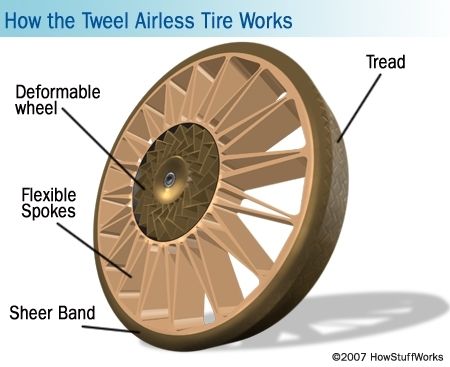 All-season tires are built to handle all kinds of conditions.
All-season tires are built to handle all kinds of conditions.
Summer tires: These are often considered high-performance tires, feature large blocks of tread that are stiff with wide grooves to expel water; the rubber is designed for warm weather.
Winter or snow tires: These feature softer rubber and tread which produce adequate grip in low temperatures with tread patterns that grip into snow; often feature thin cuts known as sipes that crisscrosses the blocks of tread to further enhance grip.
All-season tires: This kind of tire has medium-sized blocks of tread with some sipes and a rubber that fits a range of temperatures.
A tire holds air to give it the correct shape and firmness to carry a vehicle down the road. The amount of air inside the tire is measured by the amount of pressure per square inch or designated as psi. This number comes from the part of the tire that comes in contact with the road, or the contact patch.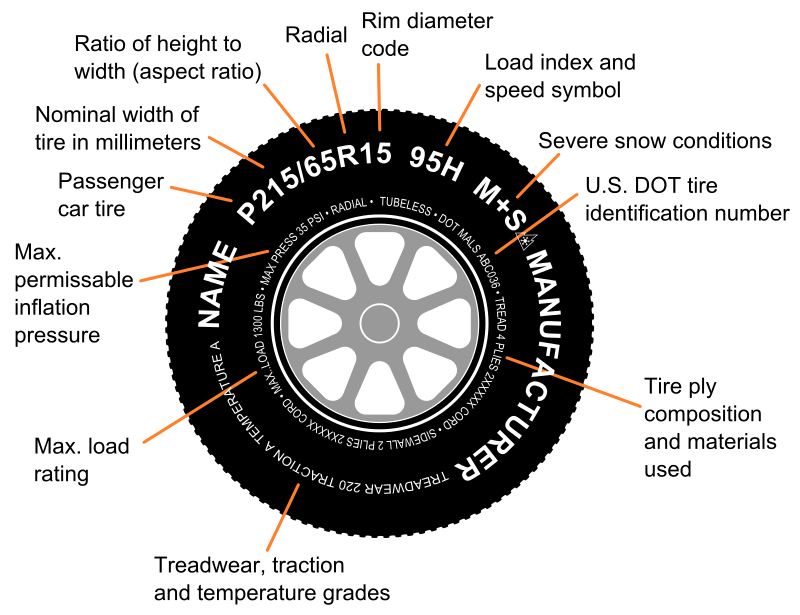 It is the portion of the tire that is not completely round.
It is the portion of the tire that is not completely round.
A tire that is properly inflated will look almost round while one that is under-inflated will appear flatter. The number of psi that must be maintained in the tire is what is required for the contact patch to be at the correct size.
A tire that is over or under-inflated is at a higher risk of damage. It also lessens the stability of the vehicle when traveling. For example, a tire with too much air won’t have enough contact with the road and will be more likely to spin or lose control, especially in adverse road conditions.
The tires must carry the vehicle along the road, but it requires so much force exerted by the vehicle to accomplish this task. The power required comes from the weight of the vehicle and the speed it is going. The tires require a lot of friction to force them to move. That amount of friction is impacted by the weight of the vehicle, which creates a coefficient of rolling friction. For an average tire, the coefficient of rolling friction or CRF is 0.015, which is multiplied by the weight of the vehicle.
For an average tire, the coefficient of rolling friction or CRF is 0.015, which is multiplied by the weight of the vehicle.
The tire generates heat because of the friction with a higher heat buildup when more force is required to move the vehicle along. The amount of heat also depends on the firmness of the surface. Asphalt creates more heat on the tire while soft surfaces like sand build up less heat. On the other hand, the CRF increases on soft surfaces because it takes more power to move the tires along.
Tires must be maintained to increase their life and wear. Tires that are overinflated wear more in the center of the tread while under-inflation causes them to wear along the outside of the tire. When tires are out of alignment, they wear unevenly, especially along the inside or outside. Worn areas are more susceptible to picking up sharp objects or getting holes in them when you run over sharp objects.
Tires that are badly worn may not be able to be repaired when they are flat.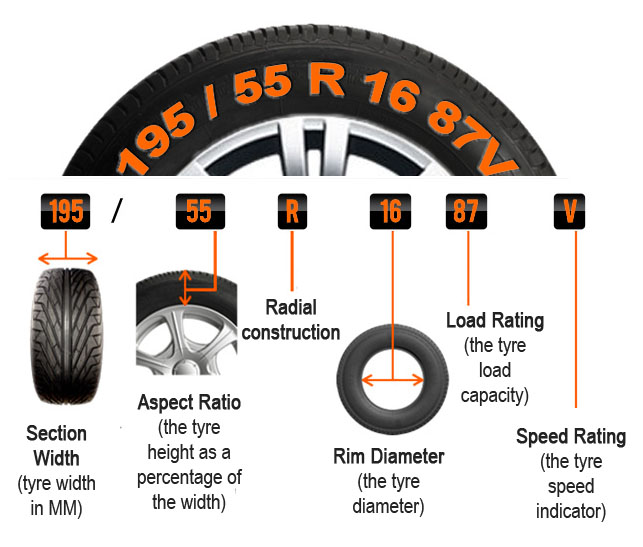 A certain amount of tread is required for the repair to be made. Another problem is when the steel belt breaks in a belted tire. It is no longer repairable and must be replaced.
A certain amount of tread is required for the repair to be made. Another problem is when the steel belt breaks in a belted tire. It is no longer repairable and must be replaced.
Tires come with various warranties based on how many miles they are expected to last. They can range from as low as 20,000 miles to upwards of 100,000 miles. The average tire will last between 40,000 and 60,000 miles if properly maintained. The life of a tire is directly affected by keeping it properly inflated, rotated as needed and the type of surface most often driven on.
The most popular service booked by readers of this article is Tire Rotation. YourMechanic’s technicians bring the dealership to you by performing this job at your home or office 7-days a week between 7AM-9PM. We currently cover over 2,000 cities and have 100k+ 5-star reviews... LEARN MORE
SEE PRICING & SCHEDULING
Tires
Traction Control
The statements expressed above are only for informational purposes and should be independently verified. Please see our terms of service for more details
Please see our terms of service for more details
4.2 Average Rating
Service Hours
7 AM - 9 PM
7 days a week
Phone Number
1 (855) 347-2779
Phone Hours
Mon - Fri / 6 AM - 5 PM PST
Sat - Sun / 7 AM - 4 PM PST
Address
We come to you at no extra charge
Guarantee
12-month/12,000-mile warranty
Our certified mobile mechanics perform over 600 services, including diagnostics, brakes, oil changes, scheduled mileage maintenances, and will come to you with all necessary parts and tools.
Get a fair & transparent quote instantly before booking.
(
1,055
)
SEE REVIEWS NEAR ME
21 years of experience
1068 reviews
Request Pardeep
Pardeep
21 years of experience
Request Pardeep
by Linda
Honda Civic L4-1. 8L - Tire Rotation - San Jose, California
8L - Tire Rotation - San Jose, California
Pardeep was on time for the appt, actually early, and finished quickly and efficiently. Thank you very much.
by Ulysses
Toyota Prius - Tire Rotation - Fremont, California
Mr. Singh was on time, gave good advice and did the services very well. By the way, this is the third time I have my car serviced by him.
24 years of experience
244 reviews
Request Jermaine
Jermaine
24 years of experience
Request Jermaine
by Jessica
Toyota Corolla L4-1.8L - Tire Rotation - College Park, Maryland
Jermaine has been very timely with all his service visits, including this one. It's awesome to be able to trust someone to come home and work on my car.
by Harriet
Volvo 244 - Tire Rotation - Washington, District of Columbia
Jermaine is very professional and very respectful. He rotated the tires and changed the oil. He also gave me suggestions on what else I needed to have checked out on my car.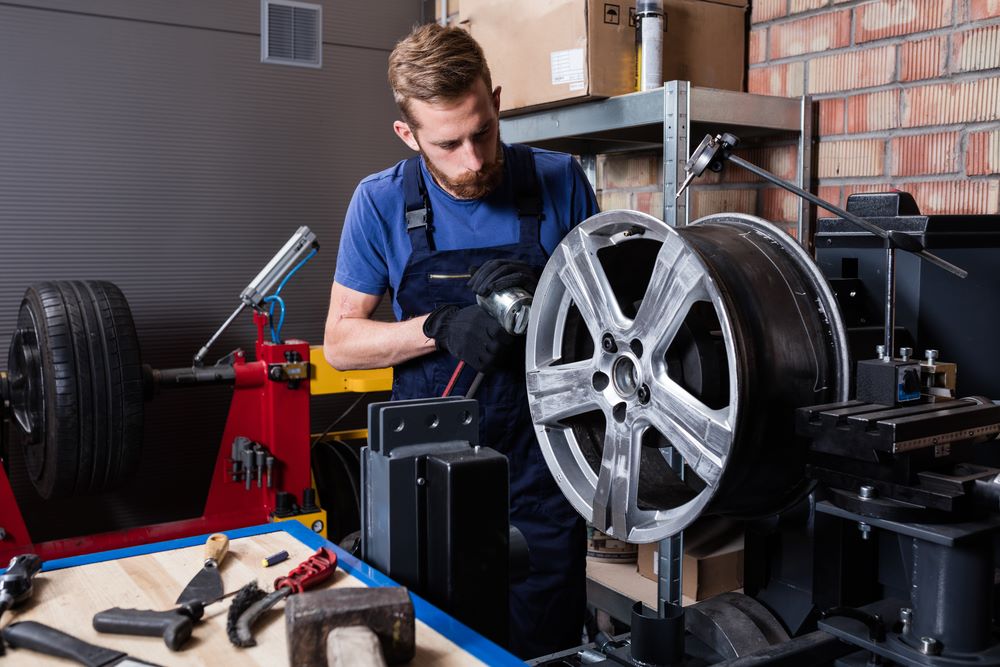 .
.
16 years of experience
99 reviews
Request Jeffrey
Jeffrey
16 years of experience
Request Jeffrey
by Mary
Honda Accord L4-2.2L - Tire Rotation - Saint Petersburg, Florida
Jeffrey arrived when he said he would and was very efficient and neat. I asked for some advice about gasoline additives and he was most helpful.
36 years of experience
541 reviews
Request Rodney
Rodney
36 years of experience
Request Rodney
by Nicole
Nissan Xterra V6-4.0L - Tire Rotation - Sacramento, California
Rodney was prompt, professional, friendly, and very knowledgeable. I am always curious about learning how cars work and he was patient and open to answering my questions. Additionally, he provided educational insight and tips about the services he performed on my car.
Our certified mobile mechanics make house calls in over 2,000 U. S. cities. Fast, free online quotes for your car repair.
S. cities. Fast, free online quotes for your car repair.
GET A QUOTE
GET A QUOTE
Is it Safe to Drive With a Flat Tire?
Once Once a tire loses a large amount of air pressure, it causes a flat tire. Overuse, puncture, improper air pressure, or a defect can cause a tire to become flat. Furthermore, driving on underinflated tires can cause damage and...
How to Maintain and Protect Your Tires
Car tires are important to staying safe on the road. Check your tire pressure or if there is any dry rot or cracking to make your tires last longer.
How to Replace a Yaw Rate Sensor
Yaw rate sensors monitor traction, stability, and the anti-lock braking system to alert you when the car tilts at an unsafe degree.
Uneven tire wear and excessive shaking in the steering wheel once hitting highway speeds.
Hi there, thanks for writing in. Based on your description of the symptoms and tire wear, it seems that your mechanic probably is correct. When the tie rod and ball joints (https://www.yourmechanic.com/article/symptoms-of-a-bad-or-failing-tie-rod-end) are damaged, they will cause the suspension to...
Bottome of vehicle makes a helicopter sound when driving at slow speeds
The sound you are hearing is related to the tires moving from what it sounds. The first thing to inspect is proper tire inflation. Tires make strange noises when they are low or damaged. Second needs to be the brakes....
I own a 2006 Cayman S. I brought it into the dealer for some concerns - please help me decide what to do
Hello - tire "speed range ratings" like "N" are for sustained speed at a specified load. If you participate in "track days" or other high-speed driving events, you would be wise to stick with an equivalent "N" rated tire, whether.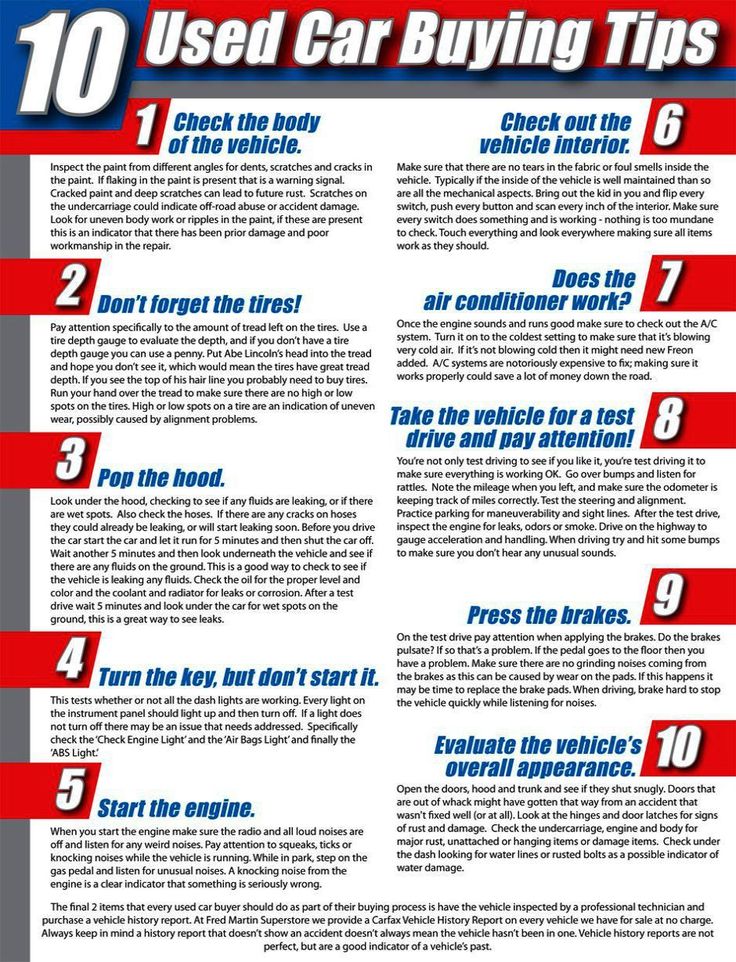 ..
..
Cities
Maintenance
Services
Our service team is available 7 days a week, Monday - Friday from 6 AM to 5 PM PST, Saturday - Sunday 7 AM - 4 PM PST.
1 (855) 347-2779 · [email protected]
Read FAQ
GET A QUOTE
Get a quote
Symptoms of a Bad or Failing Steering Column
Common signs include steering tilt not locking, clicking or grinding sounds while turning, and the steering wheel operating roughly.
How Long Does a Heat Shield Last?
The The heat that is produced by the exhaust system of an engine is much higher than most people realize. With all of the vital and sensitive components that are on your engine, it is important to have the right...
Symptoms of a Bad or Failing Ignition Coil
Common signs include the Check Engine Light coming on, engine misfiring, rough idle, a reduction in power, and the car not starting.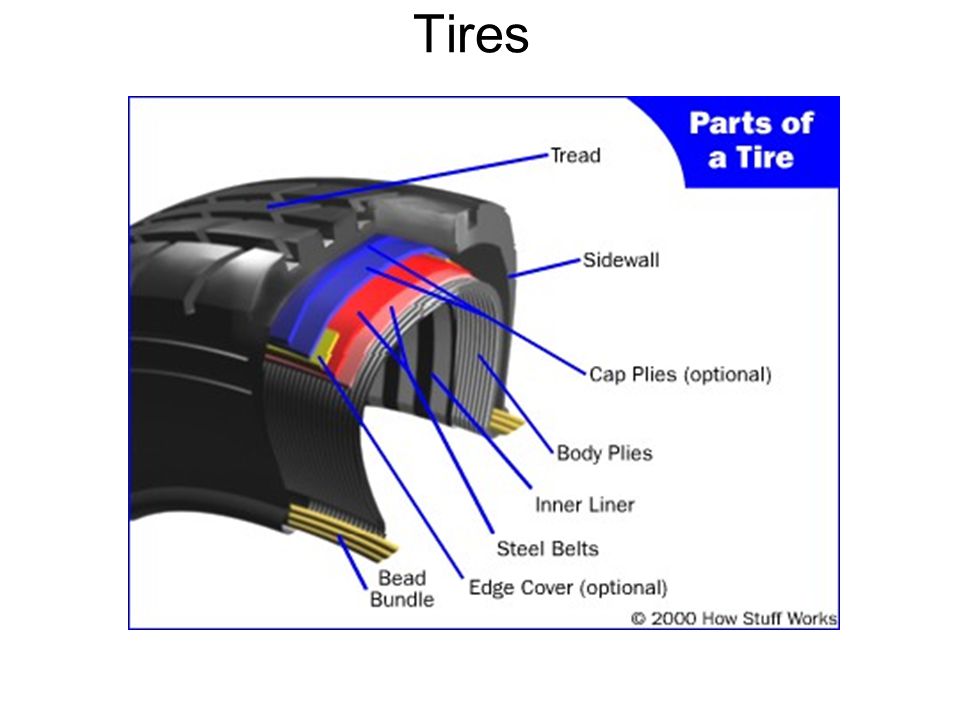
How to Replace a Fuel Pump Relay
The fuel pump has a relay that fails when there is no audible humming sound as the ignition is turned and when the car cranks after longer than usual.
How to Test an Ignition Coil
If you suspect your car has a faulty ignition coil, use a multimeter to test it out in 7 straightforward steps.
How to Read and Understand Check Engine Light (OBD-II) Codes
The Check Engine Light indicates a trouble code stored in the car’s computer and can indicate a number of issues.
When Should I Change My Oil?
Oil needs to be changed at specific intervals. With Mobil 1 synthetic oil, you can optimize performance and change your oil less frequently.
What Is the Shelf Life of Motor Oil?
If you plan on storing your oil, it's good to know how long motor oil lasts. Store your motor oil in a cool, dark place to make your oil last longer.
What Are the Risks of Switching to Synthetic Oil in Older Cars?
Older cars usually have to use conventional motor oil instead of synthetic motor oil. Switching to synthetic can cause engine leaks or engine damage.
Do Cars Need Oil Changes More or Less Often As They Age?
Car engines wear out as miles add up. Older engines and engines with high mileage have lower tolerances, making more frequent oil changes necessary.
Why Are 5W-30 and 5W-20 Oils So Common?
Changing oil is one of the most important car care tasks. Most cars use 5W-20 or 5W-30 oil because those oils work best in hot or cold temperatures.
Why Does Motor Oil Viscosity Matter?
Motor oil viscosity determines how thick or thin the oil is. Multiviscosity oils make it unnecessary to change your oil for different seasons.
How Does Oil Lubricate an Engine?
Oil is an essential fluid in your car engine. Motor oil lubricates engine parts and prevents car overheating. Changing oil helps extend engine life.
Motor oil lubricates engine parts and prevents car overheating. Changing oil helps extend engine life.
How Long Does a Steering Column Last?
Your Your car’s steering wheel is the key to maneuvering on the road, into parking spaces and more. However, it doesn’t do its job alone. In fact, it’s only one part of many in the steering system. The steering column...
Is it Safe to Drive With an EVAP Leak?
While it is safe to drive with an EVAP system leak, it causes excess car pollution. Fixing the problem is often as simple as tightening the gas cap.
What Does a Sway Bar Do?
A sway bar (also called an anti-sway bar or anti-roll bar) is a component of some vehicles’ suspensions. You might guess...
How to Replace a Fuel Pump
Fuel pumps help push gas from the fuel tank to the fuel rail. Fuel pumps have filters to prevent small particles from entering the car engine.
Is it Safe to Drive With a Vacuum Leak?
A leak is the most common problem with the vacuum system. If the vacuum system in your vehicle is leaking, your vehicle...
How to Replace a Cruise Control Brake Release Switch
The cruise control is turned off by the brake release switch which fails either when the cruise control does not deactivate or does not set properly.
Why Do Cars Have Different Oil Change Intervals?
Car oil change intervals depend on the make, model, and year of the car. The correct type of oil and how the vehicle is used makes a difference too.
Do I Need to Change My Motor Oil for Hot or Cold Weather?
Outside temperature can change how motor oil works. Multiviscosity motor oil makes it easy to keep your car running efficiently all year around.
A Guide to Motor Oil Additives
Motor oil contains various additives to make it perform better. Conventional and synthetic oils both contain additives which help prevent engine wear.
Conventional and synthetic oils both contain additives which help prevent engine wear.
What Type of Oil Should I Use?
Changing oil in your car is among the most important car maintenance tasks. Your engine may use synthetic motor oil, conventional, or either oil type.
How to Prevent Motor Oil Sludge
Regular oil changing in your car helps prevent sludge. Motor oil sludge can cause worse gas mileage, low oil pressure, and damage to engine parts.
How Much Oil Does My Car Take?
Motor oil is vital to engine function. Usually 4-cylinder engines use five quarts of oil, 6-cylinder engines use six quarts, and V8 engines use eight.
Modern tires operate at high speeds. Therefore, modern car safety requirements prescribe certain requirements that ensure the reliable and safe operation of the car.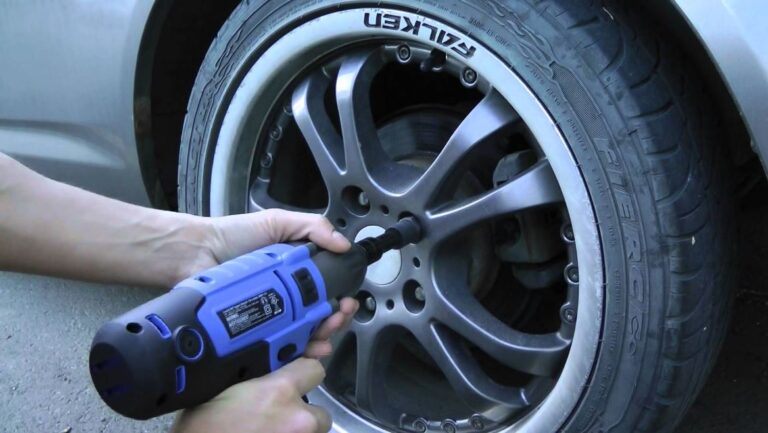 Also, its high comfort and efficiency.
Also, its high comfort and efficiency.
When developing tires, technologists take into account additional characteristics that reflect the following tire properties:
Currently, car tires are divided into low-profile and ultra-low-profile tires.
Car tire design
Carcass layer
Tire Breaker
Protector
Side part
Board
The carcass is the core of the tyre. It senses the air pressure during inflation and transfers the load acting on the tire from the road to the wheel of a moving car. The framework consists of rubber layers and the rubberized cord. The cord is subject to high loads, so it must be made of high strength materials such as cotton, nylon, steel wire, etc.
For normal operation of the tire, a close relationship between the carcass and the tread is necessary. The breaker serves this purpose. It is a rubber layer that softens the shock loads on the tire, and more evenly distributes them over the surface of the tire.
The breaker serves this purpose. It is a rubber layer that softens the shock loads on the tire, and more evenly distributes them over the surface of the tire.
The tread provides the tire with durability, reliable grip and protects the rubber from possible damage.
The tread has a specific relief pattern. Many tire performance indicators depend on its shape and depth. Therefore, the creation of a drawing is not a whim of the designer, but the hard work of the technologists of the manufacturer.
Sidewalls are usually called the layer over the side walls of the frame. They protect the tire from moisture and all sorts of mechanical damage.
A bead is a rigid rim part of a tire.
Tubeless tires are now being fitted to modern passenger cars. Compared to a conventional tube tyre, they have the following advantages:
Tubeless - safer (this is especially important when driving at high speeds)
The tubeless tire has a sealing layer that tightens the rubber when a wheel is punctured
During operation, these tires heat up much less.
Please note that wheels equipped with tubeless tires must be sealed and rigid. This means that even a slight deformation of the disk can lead to a loss of operating pressure in the tire.
The choice task for the owner of a passenger car was reduced by exactly 50%. Bias tires for passenger cars are no longer produced. They found further application only on trucks.
The difference is in the structural features of the carcass layers.
The cord thread in radial tires is located from bead to bead, in the transverse plane. And in the diagonal - it crosses. Such an arrangement of the cord impairs the performance of the tire as a whole. Radial tires have a much smaller number of carcass plies than diagonal tires. In addition, they have a powerful breaker belt that gives the tire the necessary rigidity.
The sidewalls of the radial tire have also been modified. As described above, they have a certain layer of good quality rubber.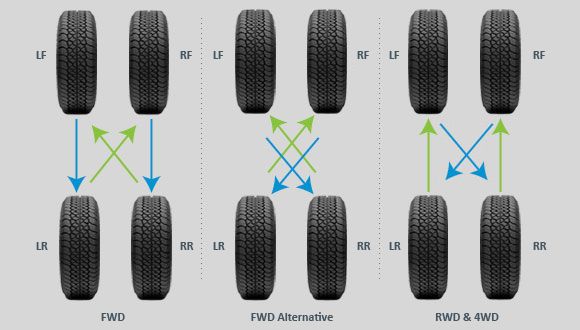 This layer is primarily necessary to protect the tire from possible damage during operation. The bead of these tires works in difficult conditions, so the bead rings and beads are stronger and stiffer, respectively.
This layer is primarily necessary to protect the tire from possible damage during operation. The bead of these tires works in difficult conditions, so the bead rings and beads are stronger and stiffer, respectively.
Below is a typical tire marking. But, as you know, each tire has its own design features. This should be carefully considered when choosing tires for a particular car.
255 - tire width (measured in mm.)
40 - profile height to tire width ratio (measured as a percentage)
R - indicates the type of tire construction. In this case, R means radial.
18 - the diameter of the rim, measured in inches (for reference: 1 inch = 2.54 cm.)
After the diameter designation, a letter may appear in the marking of a particular tire. This letter means the index of the maximum permissible speed with which a car equipped with these tires can move.
Car tire (tire) is made of rubber based on rubber compounds.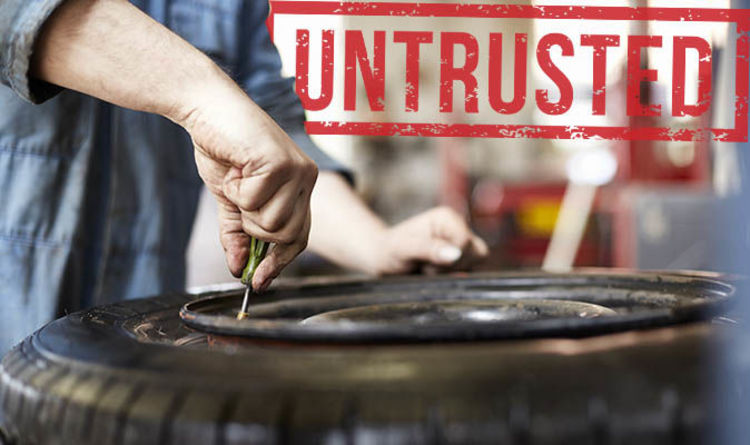 It is shaped by a cord fabric made of polymer, metal or textile threads.
It is shaped by a cord fabric made of polymer, metal or textile threads.
The task of a car tire is to soften the ride, provide traction for vehicle movement and directional stability.
The main indicators of a tire are road grip coefficient, wear resistance, rolling resistance coefficient. Grip and wear resistance are dependent on each other: the softer the tread, the better the grip will be, but the wear will also be faster. The softer the rubber, the faster it wears out. A more detailed relationship of tire characteristics is shown in the figure below. Dragging the center of the "web" to one of the sides of the wheel indicator takes away the indicator from the opposite characteristic.
Rolling resistance is the physical laws that act on the wheel while moving in a given direction. As a result of the opposition of physics, energy is lost, and therefore the engine of the car has to give out more power to spin the wheels, i.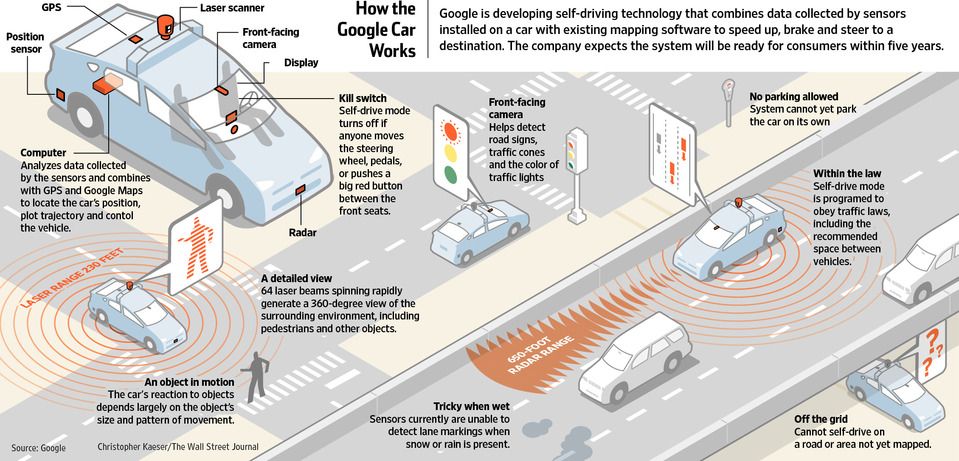 e. consume more fuel. With a 10 percent reduction in wheel rolling resistance, fuel consumption is reduced by 1-2 percent.
e. consume more fuel. With a 10 percent reduction in wheel rolling resistance, fuel consumption is reduced by 1-2 percent.
Rolling resistance is affected by tire deformation and aerodynamic drag. Everything is clear with aerodynamics, this is the force of air resistance, and how tire deformation affects rolling resistance, let's look at an example.
During the movement of the sidewalls and the contact patch of the tread, when in contact with the ground, they are constantly deformed and return to their original position. Up to 90% of the energy given to the wheel for movement is lost for deformation and restoration of the tire. Imagine train wheels. They slide along the rails without deforming. The way they are given by the direction of the rails on which they roll, they do not need to maintain directional stability so as not to go into a skid, therefore they do not need a tread, the friction coefficient with the rails is important only for rolling forward.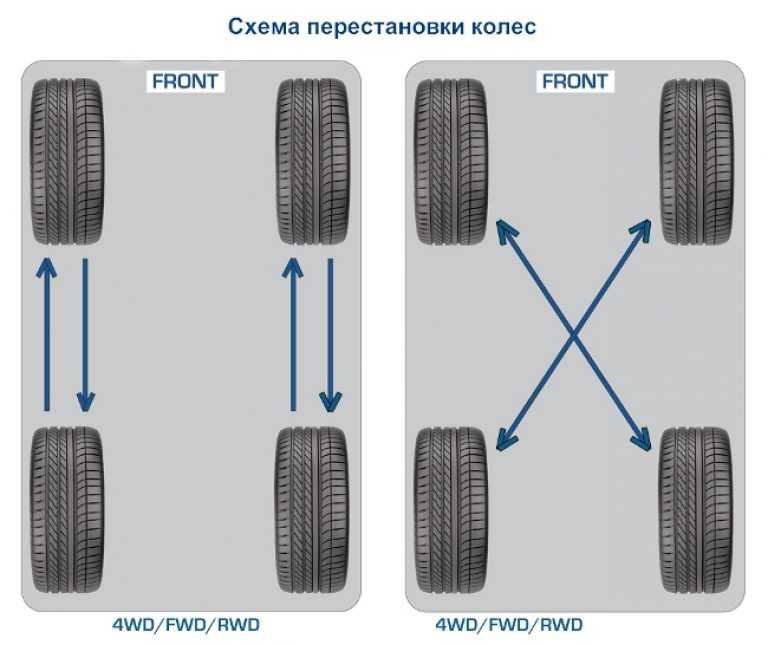 The wheel of the car is driving on a road, which, if there is no good grip, can carry it into a skid. The wheel gets directional stability due to hooks on the road surface. Clings to the road surface occur when the rubber, as it were, spreads over the asphalt, clinging to the soft parts of the tread for all the roughness and unevenness of the asphalt. The point of contact with the road is called the contact patch. The larger the area of the contact patch, the greater the coefficient of adhesion to the road. Just during the appearance of the contact patch, hysteresis occurs.
The wheel of the car is driving on a road, which, if there is no good grip, can carry it into a skid. The wheel gets directional stability due to hooks on the road surface. Clings to the road surface occur when the rubber, as it were, spreads over the asphalt, clinging to the soft parts of the tread for all the roughness and unevenness of the asphalt. The point of contact with the road is called the contact patch. The larger the area of the contact patch, the greater the coefficient of adhesion to the road. Just during the appearance of the contact patch, hysteresis occurs.
Hyperthesis is a lagging (translated from Greek), that is, a phenomenon in which the tire, in contact with the road, deforms with a delay, and then with a delay returns (bounces) to its original shape due to internal friction in its component materials. During deformation (hyperthesis), the energy that spins the wheels is lost. Imagine flat tires. They will have a larger contact patch area, better grip, but fuel consumption with them will be higher, since energy will be spent on deforming a larger area of rubber.
Another example of tires with a high rolling resistance coefficient are friction tires or in the common people "Velcro". These are winter or all-season tires that adhere to the road surface due to an increased coefficient of friction. You can't ride them in the summer. They have soft rubber, which is pressed even into microcracks in ice, due to which it holds the road in winter and a complex pattern clinging to all the small bumps on the road. Friction rubber has a high coefficient of friction, high hysteresis, high rolling resistance. Rubber with low hysteresis will have lower rolling resistance and therefore lower fuel consumption. The tire hyperthesis coefficient is closely related to the rolling resistance coefficient. Above the reduction of energy loss during the deformation of tires during movement, i.e. hyperthesis, engineers work. But to do this, without sacrificing other characteristics of a car tire, oh how not easy.
The first generation of low rolling resistance automotive rubber was not comfortable. Any bump on the road felt like a small earthquake in the car. Such tires did not have good grip on the road surface, so they were not safe.
Any bump on the road felt like a small earthquake in the car. Such tires did not have good grip on the road surface, so they were not safe.
Manufacturers reduce the coefficient of rolling resistance of tires due to new rubber compounds, tire carcass design, construction, tread pattern. At the same time, without compromising the friction force responsible for traction and stopping distance. Less rolling resistance, less fuel consumption, you've already learned that.
At the 2012 Paris Motor Show, Michelin advertised new tires with reduced rolling resistance. Having set up a spherical ramp, like skaters and roller skaters, they installed two cars at one end of the ramp, attached to a hook. At the command of a Michelin worker, the two cars simultaneously unhooked and began to roll back and forth on a spherical ramp. One of these cars soon stopped, and the second was still riding. The first one was shod with old model tires, and the second one was fitted with new Michelin tires with low rolling resistance.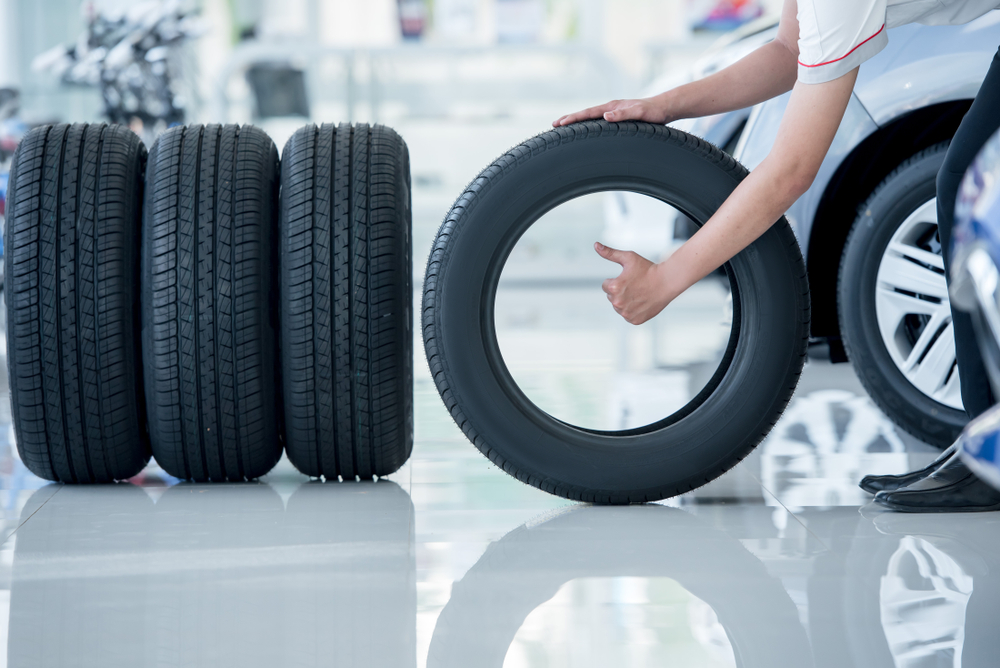
Each of these components affects the characteristics of the tyre. A thin sealing layer, for example, reduces rolling resistance and weight. It is located on the first ply of the tubeless tire carcass. The low rolling resistance contributes to low fuel consumption, and the low wheel weight contributes to better handling. But if the sealing layer is made too thin, then maintaining a constant air pressure in the tires and their service life will decrease.
Carcass design affects tire load capacity, handling, braking and comfort. There are two carcass structures - radial, when the threads of the carcass layers are arranged radially from bead to bead without intersecting, and diagonal, when the threads of the cord layers cross each other. Radial tires are produced for the most part in tubeless design, diagonal with a chamber. Radial tires have better rolling resistance, a larger area of contact with the road. For diagonal mileage 20-40 thousand kilometers, for radial 60-80 thousand kilometers
Radial tires are produced for the most part in tubeless design, diagonal with a chamber. Radial tires have better rolling resistance, a larger area of contact with the road. For diagonal mileage 20-40 thousand kilometers, for radial 60-80 thousand kilometers
Patented by Michelin back in 1946, radial tires were very slow to take over. Initially, they found popularity in motorsport. The Michelin X radial was considered all the rage among racers in the late 1950s because it had less wear and tear than the common diagonal. But radial tires did not go beyond motorsport until 1968. In 1968, Ford released a new line of cars and some of them had radial tires. Despite the advantages of radial tires, at 19In 1982 Avon and Goodyear bias tires were still outperforming Michelin and Pirelli in Formula 1 when they switched to radial tires. But the final victory was won by radial tires. The last race in which cars with diagonal tires took part took place in 1992. Find out which tires are the best here.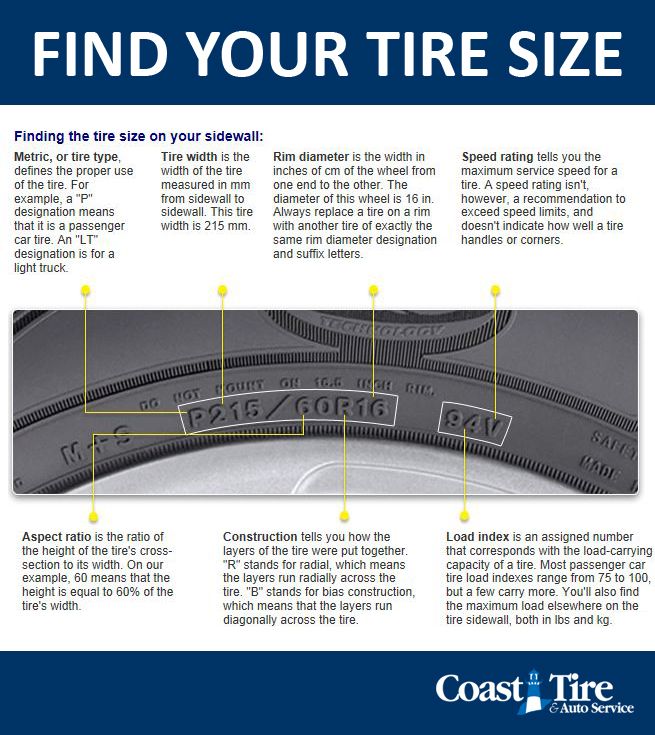
The radial cords that determine the shape of the carcass are usually made of polyester, in contrast to the belt located directly under the tread - the breaker. The breaker is made of steel cord - a cable twisted from brass-plated steel wire. The steel cord is laid both diagonally and radially.
Wheel tire elastic elements contain both natural and synthetic rubber. They haven’t learned anything better than natural rubber from synthetics yet, so it’s impossible to replace it with 100% in the composition of rubber. Race car tires are 65% synthetic. The proportion of synthetic / natural material in tires for passenger cars is 55/45. SUV tires are 80 percent or more natural rubber.
In addition to rubber, the elastomer mixture includes reinforcing materials - carbon and silicon. Silicon reduces the trade-off between wet grip, dry grip and rolling resistance. Some of the additives are antioxidants that stabilize synthetic rubber, while others improve the adhesion of rubber to steel and polyester cords or act as hardeners and processing aids.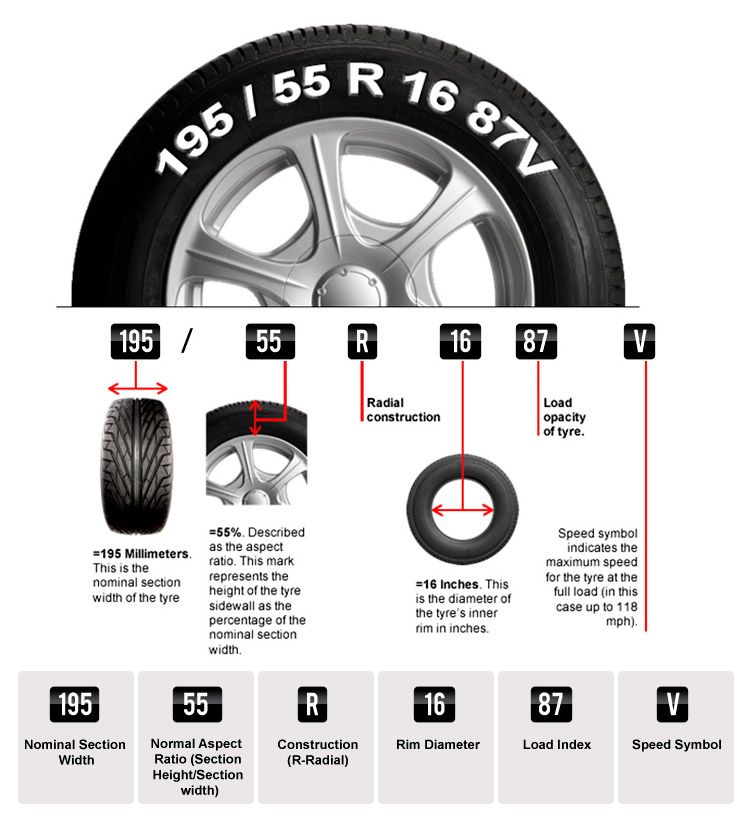
The tread pattern can be asymmetrical (uneven along the tread center line) and symmetrical (with a mirror left and right half from the central plane of rotation). Symmetrical and asymmetric patterns are directional (placed in a direction strictly in a certain direction) and non-directional (independent of the direction of rotation). The tread pattern affects the car's handling, noise level, the ability to drain water through the grooves, preventing aquaplaning.
When driving on a straight road, the compression of the leading edge of the tire's engagement field and the rebound of the trailing edge occur late, not at the same time. The already described hysteretic friction is related to this property. Add side load to the wheel when cornering and tire performance such as slip angle (or slip angle), understeer and oversteer appear.
Slip angle has nothing to do with surface sliding.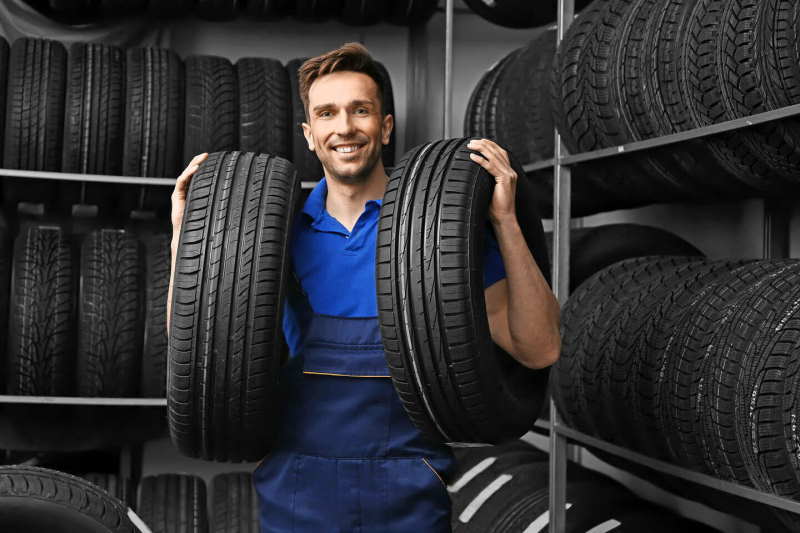 Imagine a tire in a turn and look for where the wheel touches the asphalt (contact patch). Due to side loading, the rubber will deform at the point of contact with the ground, since under side loading, the new direction of grip will not coincide with the previous direction of movement of the tire. When turning the machine, an angle is formed between the direction of rotation of the rim and the angle of rotation of the tire. The angle between these two directions is the side load slip angle. This measure measures the level of deformation of the tire under side load.
Imagine a tire in a turn and look for where the wheel touches the asphalt (contact patch). Due to side loading, the rubber will deform at the point of contact with the ground, since under side loading, the new direction of grip will not coincide with the previous direction of movement of the tire. When turning the machine, an angle is formed between the direction of rotation of the rim and the angle of rotation of the tire. The angle between these two directions is the side load slip angle. This measure measures the level of deformation of the tire under side load.
Each wheel has its own slip angle limit in a turn, above which the wheels will lose traction and begin to slide on the surface, which will lead to loss of vehicle control and skidding.
Now imagine a car accelerating around a corner. If the change in the slip angle of the front wheels is greater than the rear, then the car will understeer, the car will start to drift to the edge of the road, it will not fit into the turn. If the change in the slip angle of the rear wheels exceeds the change in the slip angle of the front wheels, then oversteer will be felt, the rear of the car will begin to skid forward. Oversteer is characteristic of rear-wheel drive cars, and understeer is front-wheel drive. Oversteer cars love drifters, read more here.
If the change in the slip angle of the front wheels is greater than the rear, then the car will understeer, the car will start to drift to the edge of the road, it will not fit into the turn. If the change in the slip angle of the rear wheels exceeds the change in the slip angle of the front wheels, then oversteer will be felt, the rear of the car will begin to skid forward. Oversteer is characteristic of rear-wheel drive cars, and understeer is front-wheel drive. Oversteer cars love drifters, read more here.
When driving on a racing lap, the car will oversteer on the outside of the track nose first. With understeer, the car will spin on the track, skidding.
Let's analyze for example the marking of Mazda MX-5 Miata tires - 205 / 50R16 with a speed rating of V. 205 is the nominal width of the tire profile, from sidewall to sidewall, measured in millimeters. 50 is the percentage of the ratio of the profile height to its width.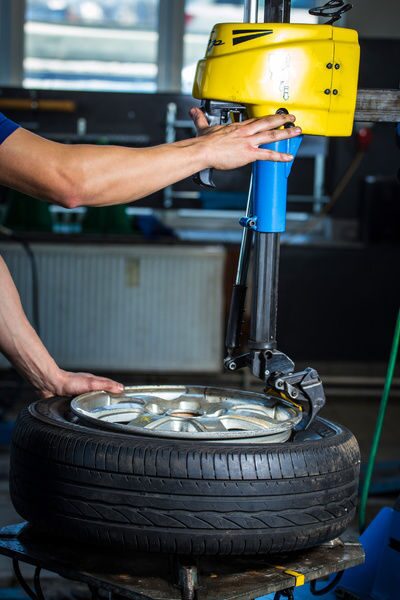 R indicates that the tire is radial. 16 - the diameter of the rims. The V speed rating means that the maximum safe speed for these tires is 240 km/h.
R indicates that the tire is radial. 16 - the diameter of the rims. The V speed rating means that the maximum safe speed for these tires is 240 km/h.
Calculating the bus using arithmetic, we get more information about it. As shown in the picture, our 205/50R16 tire has a section that is 8.1 inches (205 mm) wide. Each sidewall is 50 percent of this value, i.e. about 4.05 inches. Thus, the diameter of the tire and 16-inch wheel assembly is 24.1 inches, and the wheel circumference is 75.7 inches. Read more about how to read the marking of car tires, read here.
Now let's debunk the misconception that the wider the tires, the better the grip, the shorter the braking distance, the better the acceleration of the car. If you change Miata shoes from 205 / 50R16 to rollers with a tread width of 235 mm, it would not go faster and slow down.
On 235mm wheels, the tarmac contact patch will be wider, but narrower along the tread diameter.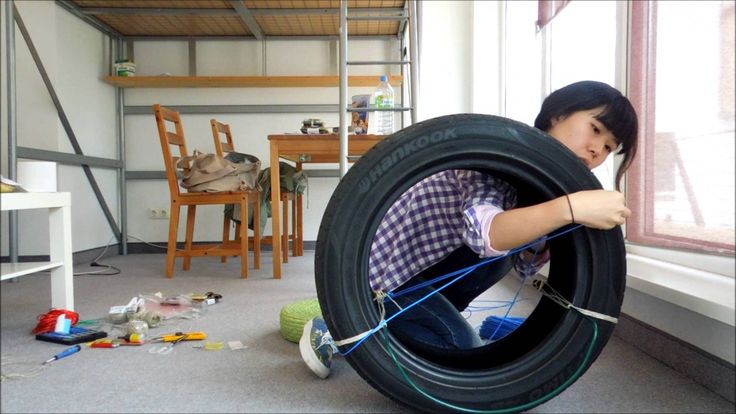 This is because the pressure on the tire will be distributed along its width, the contact patch area will decrease in length. If you measure the area of the contact patch of rubber 205 mm and 235 mm, it will be the same. The reason for this is that the air pressure in the tire and the weight of the car, which affect the area of the tire's contact patch with the ground, will not change. The weight of the Mazda MX-5 Miata will remain 1207 kg, and the tire pressure, according to the regulations, is also 1.8 atmospheres.
This is because the pressure on the tire will be distributed along its width, the contact patch area will decrease in length. If you measure the area of the contact patch of rubber 205 mm and 235 mm, it will be the same. The reason for this is that the air pressure in the tire and the weight of the car, which affect the area of the tire's contact patch with the ground, will not change. The weight of the Mazda MX-5 Miata will remain 1207 kg, and the tire pressure, according to the regulations, is also 1.8 atmospheres.
But wide wheels have one indisputable advantage, they are better in corners. The wide contact patch handles side loads better, so cornering is better. For driving on straight roads, increasing the width of the tire does not play a role.
Low profile tires
On low profile tires, the car turns sharper, better controlled, more predictable. The disadvantages of low-profile rubber are that it hits the suspension and absorbs bumps in the road poorly.
Back at 19In the 80s, when a standard wheel tire had a width to sidewall ratio of about 78%, it was easy to recognize a "low profile" tire with a width to sidewall ratio of 60% by the way the car wipers and mirrors shook over every bump.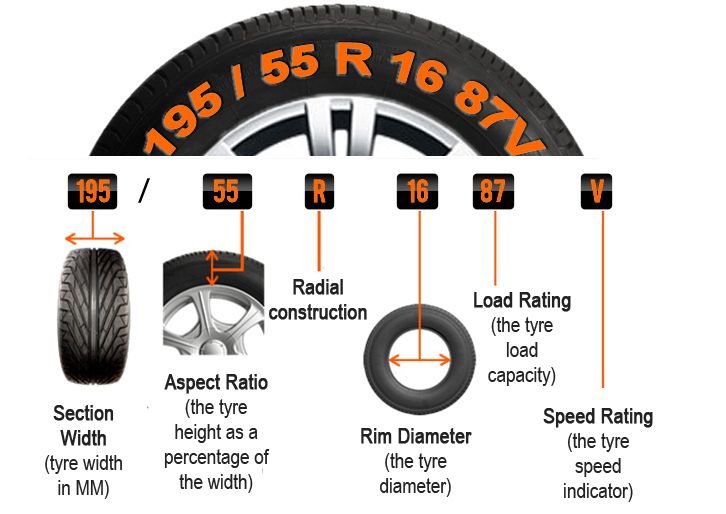 In the 80s, the rubber from which the tires were smelted was rough, so it was difficult to achieve comfort with a width to height ratio of 60%. Now ordinary new sedans gently, not to the detriment of the suspension, move on rubber with a ratio of the width and height of the sidewall - 45%.
In the 80s, the rubber from which the tires were smelted was rough, so it was difficult to achieve comfort with a width to height ratio of 60%. Now ordinary new sedans gently, not to the detriment of the suspension, move on rubber with a ratio of the width and height of the sidewall - 45%.
In 2020, with current tire technology, a more or less soft ride for a passenger car is obtained on low-profile 255 / 20R-24 tires. If the ratio of the tire bead to the width is less than 20% or the diameter of the disks is more than 24 inches, such “rollers” on the car will only be for beauty, it will be uncomfortable and not safe to ride on them. Selection of low-profile tires on retro disks, the editors of Zap-Online.ru have collected here.
If low-profile tires have good handling and sharp cornering, why aren't they put on Formula 1 cars? Yes, because the International Motorsport Federation has its own opinion on this matter. The rules of Formula 1 are very tight in wheel size and tire/tire ratio.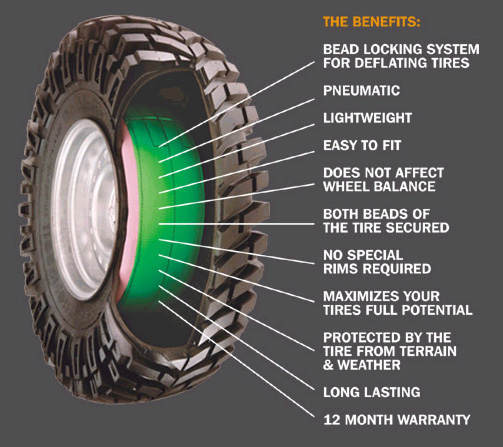 Therefore, in Formula 1 cars they put wheels with a high ratio of width to height: the front is about 245 / 65R-13, the rear is 325 / 50R-13. It is curious that such wheels are inflated with a relatively low pressure of 1.4 bar (or 1.4 kg per square centimeter) and only with air or nitrogen. The goal of the federation is one, leveling the participants in the race.
Therefore, in Formula 1 cars they put wheels with a high ratio of width to height: the front is about 245 / 65R-13, the rear is 325 / 50R-13. It is curious that such wheels are inflated with a relatively low pressure of 1.4 bar (or 1.4 kg per square centimeter) and only with air or nitrogen. The goal of the federation is one, leveling the participants in the race.
Earth's atmosphere is 78 percent nitrogen, 21 percent oxygen, as well as water vapor and other gases. Nitrogen molecules are larger than oxygen molecules, so a tire filled with nitrogen will be less susceptible to leakage. The low percentage of nitrogen leakage allows the pressure to be maintained even over a wide range of tire temperatures. Nitrogen can be used to inflate wheels at some tire stations for a long time. Read more here.
The first model with an electronic tire pressure monitoring system (TPMS) was the 1997 Chevrolet Corvette.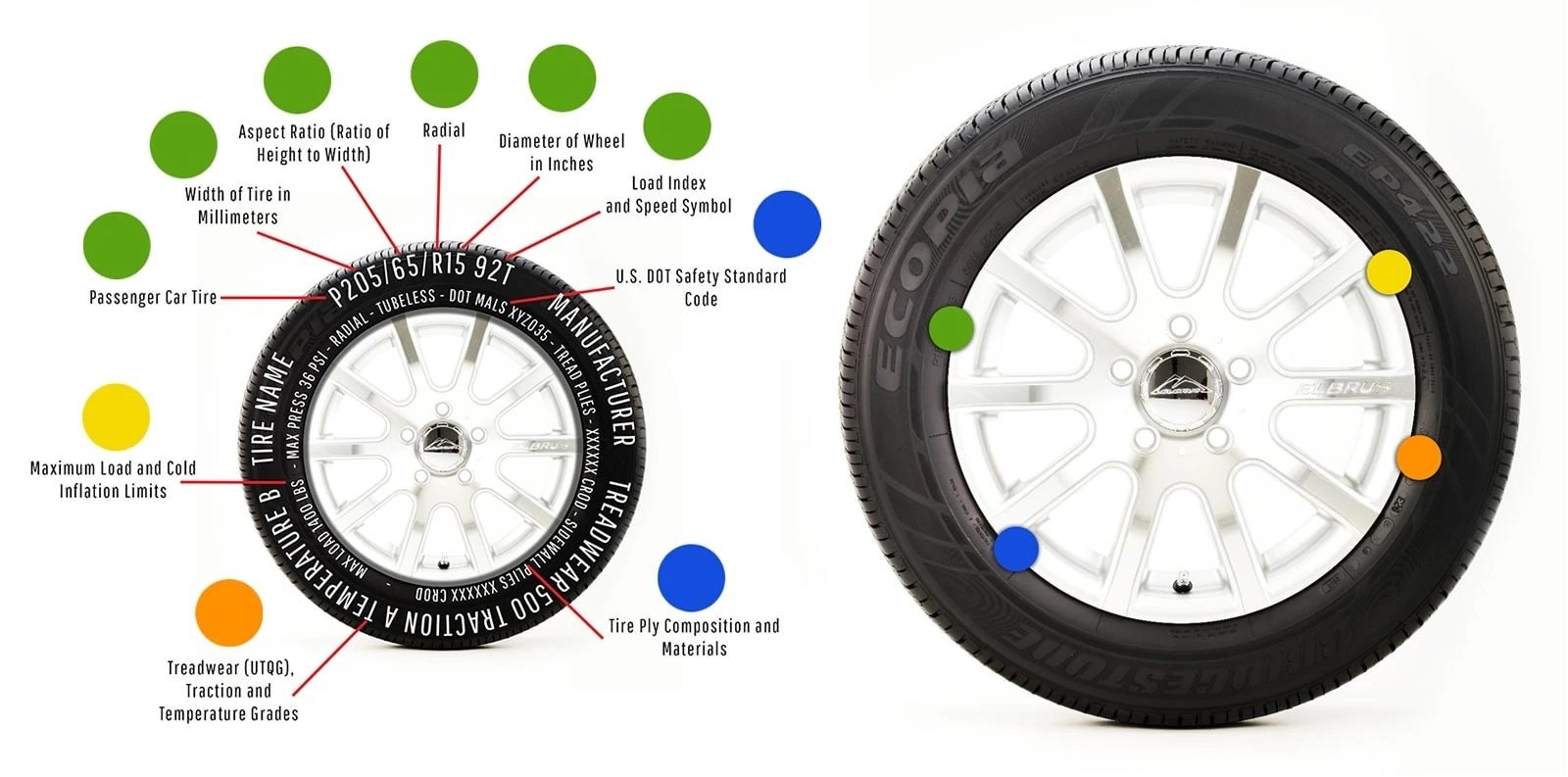 After the technology went to the masses. However, not all TPMS are created equal. Indirectly, the system depends on the ABS control unit (1). ABS estimates the time it takes a wheel to complete a full revolution at a certain speed and compares it with the time it takes for the other three wheels to complete a complete revolution. If the wheel is flat, its diameter will decrease, and the travel time per unit of time will increase. The rotation time will differ from the time of the other three wheels, the data will fly to the ABS unit and the sensor on the control panel will light up indicating which wheel has flattened (2).
After the technology went to the masses. However, not all TPMS are created equal. Indirectly, the system depends on the ABS control unit (1). ABS estimates the time it takes a wheel to complete a full revolution at a certain speed and compares it with the time it takes for the other three wheels to complete a complete revolution. If the wheel is flat, its diameter will decrease, and the travel time per unit of time will increase. The rotation time will differ from the time of the other three wheels, the data will fly to the ABS unit and the sensor on the control panel will light up indicating which wheel has flattened (2).
However, this method of measurement will not catch a gradual decrease in pressure in all four wheels. Sensors with digital Bluetooth or Wi-Fi protocol show themselves better. Such sensors measure the pressure in the wheels individually, transmitting information to the central computer. The disadvantage of such sensors is in the power system. The battery will last for one to two years of use. Just in case, it does not hurt to have a personal pressure gauge in the car to measure the pressure in the wheels.
Just in case, it does not hurt to have a personal pressure gauge in the car to measure the pressure in the wheels.
Electronic tire pressure sensors (1) emit wireless signals to a receiver unit (2) installed in the vehicle. The indicator on the dashboard lights up when the tire pressure drops below 25% of the set pressure. Some indicators determine which tire is flat (4), while others do not (3). Read more here.
Spare tires take up a lot of space, add weight and cost to the vehicle, making the spare tire an endangered species. SUVs and light trucks usually have a spare tire. In passenger cars, automakers are now putting a temporary spare tire of minimal size or putting RunFlat tires on the wheels. On wheels shod in RunFlat, you can continue driving at speeds up to 60 km / h, that is, you can easily get to the tire shop. A decorative, bright yellow painted spare wheel is placed in the car instead of a regular wheel so that the driver does not ride it until the next puncture, but repairs or replaces the punctured wheel.